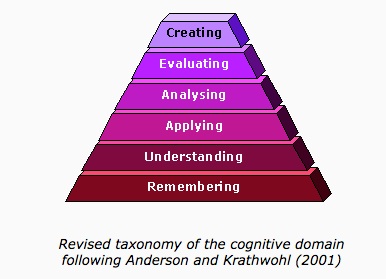Join me on a journey as I look back at my ten years of teaching and reflect on how three different learning theories have shaped my philosophies of education.
Behaviourism
According to Anthony William (Tony) Bates’ book Teaching in a Digital Age, “At the heart of behaviourism is the idea that certain behavioural responses become associated in a mechanistic and invariant way with specific stimuli. Thus a certain stimulus will evoke a particular response.” (Bates, 2.3.3).
I can confidently, but not proudly, say that my earliest teaching years focused heavily on this theory. My first year as an educator, The Zones of Regulation was all the rage. We were asked to have the posters hanging in our rooms so we could point to the different colours and ask our students, “What zone are you in right now? What zone should you be in? What can you do to get back to that green zone?”
Just by drawing the students’ attention to these coloured posters, our questions would prompt them to calm down, and practice mindfulness to get themselves into a learning mindset.
I also spent a year trying out Class Dojo, which was very unsuccessful and short-lived. Although I enjoyed the short lessons on developing a growth mindset, the idea of having points sitting on the board for everyone to see was too distracting and frustrating for students. Very soon after beginning to use this behaviourist technique, I learned that it was counterproductive to subtract points for negative behaviour. This was embarrassing and shameful for the students that it effected, and immediately closed them off. It didn’t build a respectful relationship between myself and the students, and I have never believed in taking things away as a method to sway student behaviour.

Photo by ammcintosh1 on Pixabay
Now, what I try to do is start the year by making sure my classroom is a safe, nurturing community for students to come and feel loved and cared for. We create a class contract and spend time discussing the things that make us feel safe, and the things that allow us to learn. When we are trying something new I try to give students time to goof around and be kids.
This week, for example, we utilized Jamboard. I set aside the beginning of the lesson to make a blank board so students could hop on and play around with it… putting funny emojis and messages to each other, and trying to take over the space. When we were ready, we talked about how it can be used as a great discussion tool.
To sum up behaviourism in my teaching practice, I would say that I am trying to find a delicate balance between fostering a calm, effective learning environment and trying to gain total control over my students.
Cognitivism
“Cognitivists believe that humans learn from thinking. They believe that we learn from our experiences and that we can change our behaviors based on new information. Knowledge is considered an internal process rather than a product.” Main, P (2022, December 09). Cognitivism Learning Theories: A teachers guide.
As a new teacher, I can say that I didn’t practice this learning theory as much as I do now. Inquiry- Based Learning was new to me and something that seemed too big to conquer. I tried creating inquiry projects to help students reach the learning outcomes in a more meaningful way, but it took a lot of time and a lot of preparation on top of being bounced from grade to grade and starting from scratch each year. When I started teaching, there were a lot of teachers who wanted to get hired, and I took whatever I was offered with the hope of that permanent full time contract.
- I started in Grade 7 along with Grade 5/6 prep coverage
- Next was one month of grades 1-5 Arts Ed coverage at a French Immersion School (no, I don’t speak French)
- The rest of that second year I was moved to Grade 2/3 in the mornings in one school, and 5-8 prep coverage in the afternoons at another (Mondays-Thursdays)
- From there I got a grade 3 position in the mornings, and a Grade 5/6 in the afternoons at a second school (still at 80%, but this time a permanent contract!)
- Next, I was finally able to get 100%, but 2 mornings a week I was the Music Itinerant at a second school.
- Finally a spot opened up for me to have Grade 6 full time in one school!
- Since then I have been bouncing between 5/6 and 6/7
With so much movement, I wasn’t willing to reinvent the wheel each year. So, what I did was keep my teaching basic. Here is the unit, these are the lessons, and at the end there will be a test which will require you to memorize the things.
So you can imagine my excitement when I learned about Genius Hour at a Middle Years Conference – meaningful learning that doesn’t require so much time on my end. It makes perfect sense… why don’t we also focus on teaching our students HOW to learn so they can continue to grow when they leave school?
Genius Hour for me was a wonderful experience when I had a class who was capable of it. My students were learning math, science, research skills, the arts, and everything in between. They were engaged, they were excited, and they loved sharing what they learned with each other! Am I doing Genius Hour this year? Nope. Will I in the future? It depends on the group of kids I have!
Considering Bloom’s Hierarchy of Learning, I felt (and still feel) that this form of learning pushed students beyond beyond remembering facts, past applying what they’ve learned, to creating their own projects and sharing those with others.
Constructivism
According to Teaching in a Digital Age, “Constructivists believe that meaning or understanding is achieved by assimilating information, relating it to our existing knowledge, and cognitively processing it (in other words, thinking or reflecting on new information).” (Bates, 2.5.1)
This learning theory can also be applied through Genius Hour, but right now I see it most applied through play-based learning.
In my personal teaching, I try to practice the constructivist approach by taking advantage of situations happening to connect them to curricular outcomes and life-lessons. On one of our frigid winter days, we looked out the window and learned about sundogs… what causes them, when we can see them, and how this applied to our weather unit, light unit, or space unit in science.
In health, this looks like a group discussion on the media we consume, and how that media inadvertently shapes our ideas of what it means to be either male or female. To me, it is all about trying to get my students to look at the world more critically and find connections and places where they can better themselves and grow.
One more example of this would be in my English Language Arts program. In the past, I would borrow a novel set, and use it along with chapter questions and vocabulary words to teach.
This year I am working with my principal to do Literature Circles. What I LOVE about this is that my students are able to pick what books interest them out of 16 choices. Each book group has 3-5 members, and each week each member takes on a different role. One of my favourite roles is that of the Investigator. The job of the Investigator is to collect background information on the book to help enlighten the group. This is building curiosity in what we are reading.
For example, in this week’s group, the Investigator of the book Prisoner B-3087 shared information they found about the life of the book’s main character, Yanek Gruener. This led to a meaningful discussion about what humans are able to survive if they maintain hope. We learned about what Death Marches are, the dangerous power of hatred, and talked about why anyone would follow Adolf Hitler when his ideas were so barbaric and evil. To me, this discussion proved far more meaningful than answering basic chapter questions.
Well, that about sums it up! Thank you for sticking with me on this one. I have never sat back and thought about how much my teaching has changed over the course of my career. I am always open to learning and trying new things to better equip my students for a successful life when they leave school.



This was a great post! I agree with you that at the start of my career I really leaned towards the behaviourism theory in the fact I was trying to find classroom management strategies that fit my style and what worked for my students. I also agree with you when you talked about constantly moving job positions that it was difficult to reinvent the wheel and you often turned to the resources available to you. As this is my first year in a permanent grade 7 contract, I find that I am at that stage of using what has been shared with me or textbook work, however, set a goal to focus on one subject at a time to find some way to make it more inquiry based and exploration for my students.
Thank you for sharing the link to your lit circles, I have been looking for ideas of how to bring this into the classroom and your set up sounds great! I would love to see more of how you set this up.
Thanks for the feedback, Sydney! I’m happy to share anything and everything… just let me know 🙂
It’s funny how as we get more comfortable being in the classroom and getting our students’ attention how our teaching adapts.
Enjoyed reading the 3 theories that related to your personal experiences.
Thanks Mandeep! It’s definitely interesting going back to evaluate my own teaching practices over the years.